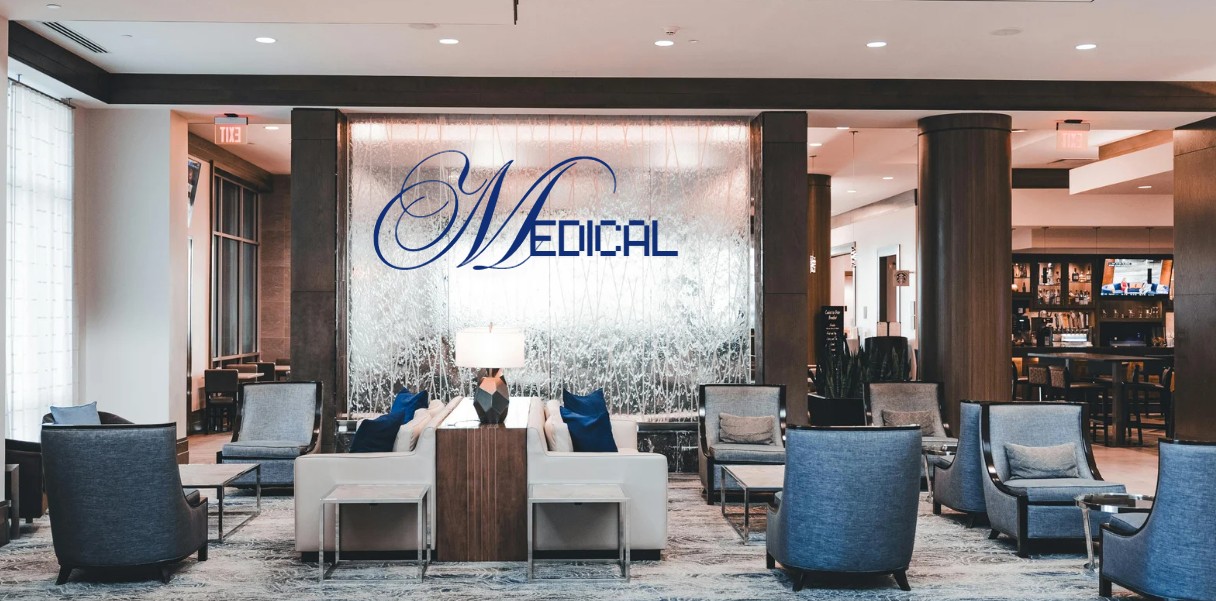
When it comes to healthcare, the environment of a medical office often plays a significant, yet underestimated, role in the patient experience. Thoughtful medical office design not only supports the comfort and well-being of patients but also improves operational efficiency for healthcare providers. Every element—from lighting to layout—is an opportunity to create an environment where patients feel cared for and staff can perform at their best.
Prioritizing Patient Comfort
The patient experience begins the moment someone steps into the waiting area. The space should evoke feelings of calm and comfort while minimizing stress or anxiety. Here’s how design elements can help achieve this:
- Welcoming Entrances and Waiting Areas
A welcoming reception area sets the tone for the rest of the visit. Warm lighting, soft seating, and natural materials like wood or stone create a more approachable and less clinical atmosphere. Including features such as a complimentary beverage station or interactive play areas for children can further enhance the experience.
Did You Know? Studies show that incorporating biophilic design elements, such as plants or nature-inspired artwork, can reduce patient anxiety and increase overall satisfaction.
- Sound Management
Medical offices are often noisy environments. Soundproofing and acoustic panels help reduce the echo of conversations and equipment noise, creating a quieter space that’s more conducive to relaxation. This is especially crucial in high-stress settings like pediatric or mental health clinics.
- Comfort Through Privacy
Patients value discretion, especially in healthcare settings. Thoughtfully positioned furniture in shared spaces and strategic layout choices keep conversations discreet. Exam rooms away from high-traffic areas protect patient confidentiality and reduce the likelihood of interruptions.
- Streamlining Workflow Efficiency for Providers
An efficient medical office benefits both providers and patients. By reducing friction in everyday operations, staff can focus more on patient care and less on logistical challenges.
- Efficient Layouts
Medical office spaces must be designed to optimize flow. For example, separating clinical areas from non-clinical ones helps reduce unnecessary foot traffic. Thoughtfully positioned exam rooms near centralized supply stations allow providers to access tools quickly without disruption.
Did You Know? A well-organized layout can cut staff travel distances by up to 30%, according to recent studies, significantly streamlining daily operations.
- Integrated Technology
The rise of technology in healthcare presents new opportunities for design innovation. Spaces for telemedicine appointments, charging stations for tablets or laptops, and seamless integration of patient check-in kiosks can enhance both provider and patient experiences.
- Enhancing Accessibility for All
Accessibility is another key factor in designing medical offices. A well-designed space should meet the needs of all patients, including those with physical, sensory, or cognitive disabilities.
- ADA-Compliant Features
From wide doorways to barrier-free exam rooms, following Americans with Disabilities Act (ADA) guidelines ensures that medical offices are accessible to everyone. Adjustable exam tables and chairs, low reception desk counters, and easily navigable hallways can make a big difference for patients with mobility challenges.
Did You Know? Including visual and auditory wayfinding systems, such as tactile floor markers or voice-guided navigation, can make spaces more inclusive for individuals with visual or hearing impairments.
- Universal Design Principles
Universal design takes accessibility one step further, creating spaces that are inherently inclusive. For instance, bathrooms with hands-free faucets, lever-style door handles, and single-level flooring can benefit all patients, regardless of ability.
- Lighting as a Healing Tool
Lighting is more than just a functional element in medical offices; it can influence mood, energy levels, and even recovery times.
- Natural Light
Maximizing natural light in waiting rooms, exam rooms, and even staff break areas can improve mental health and well-being for both patients and employees. Large windows, skylights, and light wells can help bring in daylight while maintaining privacy.
Did You Know? Exposure to natural light in healthcare environments has been associated with lower blood pressure and faster recovery rates for patients.
- Task and Ambient Lighting
For clinical areas like exam rooms or operating suites, task lighting must provide clear visibility without being harsh or uncomfortable. Dimmable ambient lighting in consultation areas can create a calming atmosphere for more personal interactions.
- Thoughtful Colors and Materials
Material selection plays a significant role in crafting a warm and hygienic environment. Durable, easy-to-clean surfaces ensure proper infection control without sacrificing aesthetics.
- Color Psychology
Pale blues, greens, and soft neutrals are popular choices for healthcare spaces due to their calming effect. Brighter accents can energize spaces like pediatric clinics, while earthy tones might better suit family practices or wellness centers.
- Hygienic Materials
Antimicrobial surfaces for countertops, flooring, and door handles help reduce contamination risks while maintaining visual appeal. Vinyl flooring and quartz countertops are both durable and attractive options.
Summing Up
At HDA Architects, we understand that designing medical offices is about more than creating attractive spaces. It’s about crafting environments where patients feel cared for and employees can perform at their best. From patient comfort to provider efficiency and accessibility, every detail matters.
With years of experience specializing in medical architecture, we know how to bring your vision to life while meeting modern healthcare challenges. If you’re ready to rethink or redesign your space, our team is here to make it happen. Contact HDA Architects today and start building an environment where care truly comes first.
Q1: What are the best elements to include in a medical office to enhance patient comfort?
A1: The best elements include warm lighting, comfortable seating, and calming decor such as nature-inspired artwork or plants. Thoughtful soundproofing, private exam rooms away from high-traffic areas, and features like beverage stations or children’s play areas also contribute to a more welcoming environment for patients.
Q2: How can medical office design improve efficiency for healthcare providers?
A2: Efficient layouts are key, such as separating clinical and non-clinical spaces to minimize unnecessary movement. Centralized supply stations near exam rooms save time, while integrating technology like check-in kiosks and telemedicine spaces enhances workflow. These design choices allow providers to focus more on patient care.